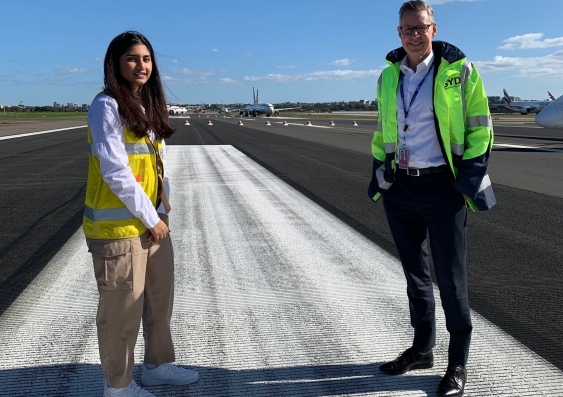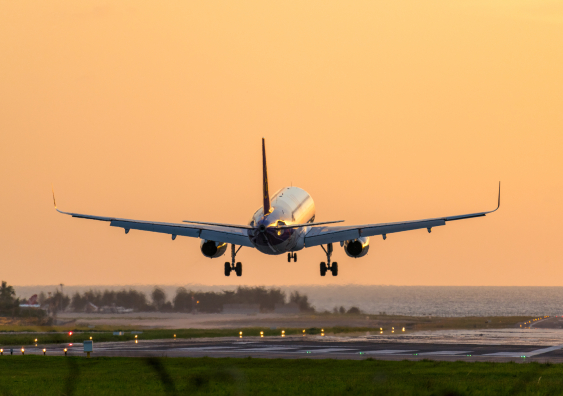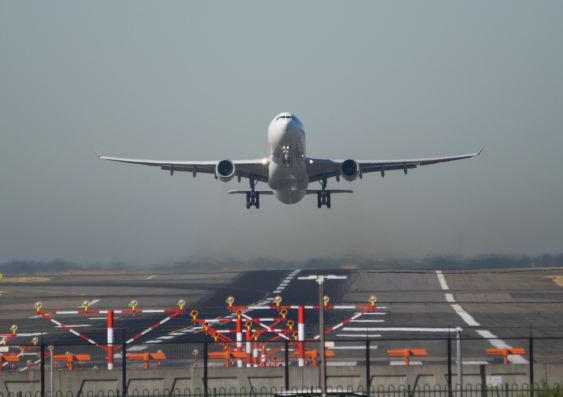Cutting-edge planes take UNSW to new heights
2025-02-10T08:52:00+11:00

UNSW students Lillian Miller, Karl Smith, Arjun Jogia (instructor and UNSW graduate) and Ariane Fouracre in front of one of UNSW's new Diamond DA40 XLT aeroplanes.
Photo: UNSW Sydney
UNSW School of Aviation has acquired six new state-of-the-art aeroplanes, enhancing the training experience for Australia's next generation of pilots.
UNSW School of Aviation has welcomed the arrival of new Diamond DA40 XLT aeroplanes at Bankstown Airport. After a few weeks of testing, two of the cutting-edge aeroplanes will now enhance the hands-on experience for aviation students, with four more ready over coming months.
Malcolm Good, UNSW Director of Flying Operations said the latest additions to the fleet ensure his students - the next generation of aviation leaders - are trained in some of the safest and highest-quality aeroplanes available.
“This investment in new aeroplanes cements our position as a leading provider of flying training in Australia. UNSW is one of only two universities to own and operate our own aeroplanes for flying training, and the new fleet ensures we’re able to deliver best-practice instruction in the country,” Mr Good said.
Prior to arriving in Australia, the aeroplanes were manufactured in Toronto, Canada. Mr Good and UNSW’s Head of School of Aviation, Professor Brett Molesworth, travelled to Canada a year ago to conduct acceptance testing before the aeroplanes made the two-month journey by sea to Australia.
“It was incredibly exciting to see the aeroplanes arrive in fantastic condition! Our pilots are queuing up to take them to the skies,” Mr Good said.
UNSW Vice-Chancellor and President Professor Attila Brungs said the arrival of the Diamond DA40 aircraft marks an exciting milestone for UNSW Aviation.
“This investment is a testament to our commitment to providing world-class aviation training and ensuring our students are equipped with the skills, knowledge, and experience needed to become future leaders in the industry,” Prof. Brungs said.
“We’re proud to support our students by fostering not only technical expertise but also leadership, problem-solving, and social awareness. These qualities are essential for navigating the complexities of modern aviation and driving meaningful advancement in the sector.”
Learning to fly
Students at UNSW Aviation will complete flight training in the new DA40 XLT aeroplanes. A student studying a Bachelor of Aviation (Flying) for example, will spend their first 160 hours of flying training in the Diamond DA40 aircraft and their final 40 hours in a multi-engine aeroplane.
“In terms of flying, it’s fantastic to be able to teach students in such quality aircraft – it really gives them the best opportunity to develop their skills,” Mr Good said.
The DA40 XLT aircraft ensures students are familiar with the navigation, communication, and flight management systems used in commercial aeroplanes.
Its design offers a stable and representative flight experience, enabling students to practice essential skills like take-offs, landings, and in-flight manoeuvres. The aeroplanes also incorporate state-of-the-art safety systems, preparing students to handle challenges and emergencies - a critical aspect of professional aviation.
“This hands-on training serves as a stepping stone to more complex multi-engine aircraft, building the technical knowledge and confidence required to pilot larger commercial aeroplanes,” Mr Good said.
Karl Smith, a student currently completing his third of UNSW’s Bachelor of Aviation (Flying) said the capabilities of the new aircraft are impressive, rivalling those of many commercial aircraft.
“Training in state-of-the-art aircraft provides exposure to the benefits of high-quality technology, and how it can be utilised to achieve safe outcomes,” he said.
“It’s certainly nice to know that I’m inside some of the safest training aircraft around, that prime you in responding to any adverse scenario.”
UNSW is one of only two universities to own and operate our own aeroplanes for flying training, and the new fleet ensures we’re able to deliver best-practice instruction in the country.
UNSW Aviation currently has over 500 students enrolled in undergraduate and postgraduate degrees. An additional 290 students study short courses across Lifelong Learning and Air Transport Pilot Licence Theory courses.
The flagship aviation degree is the Bachelor of Aviation (Flying). At present, there are over 100 students enrolled in the degree. This is a specialist course that offers professional flying qualifications in addition to academic study.
“It’s been my dream for as long as I can remember to become a commercial pilot, and the thought of waking up every day to fly aircraft professionally motivates me to work harder, and hold myself to an exceptional standard,” Mr Smith said.
Malcolm Good said many future industry leaders come out of UNSW’s Bachelor of Aviation.
“The various degrees on offer at UNSW Aviation teach students not only how to fly planes and drones but also the logistical, safety and financial challenges of managing airports and airlines,” Mr Good said.
“Despite an exponential growth of drones for the future, aeroplane pilots remain in high demand with forecasts by Boeing of over 600,000 new pilots needed to sustain the global commercial fleet over the next 20 years.
“Worldwide, there is a shortage of pilots, and Australia is not immune. The Federal Government’s Aviation White Paper found the industry is struggling to train and recruit enough pilots, flight instructors and engineers to meet demand,” Mr Good said.
An enhanced flying experience
The Diamond DA40 XLT aeroplanes were selected for their safety performance, dependability, size, weight, and propeller construction.
“Not only do the aeroplanes have favourable handling characteristics, but they also require less maintenance which importantly means students will be able to fly more frequently,” Mr Good explained.
The four-seat aeroplanes are suitable for UNSW Aviation’s integrated Commercial Training due to their airspeed performance and constant-speed propeller, which satisfy CASA requirements from initial training all the way to the Commercial Pilot Licence.
The aeroplanes have a composite lightweight airframe, industry leading Garmin G1000 NXi avionics and are powered by a 180HP IO-360 Lycoming engine.
UNSW Aviation currently operates 15 aeroplanes, and the new fleet will gradually replace six of the older aeroplanes in the current fleet.
In the future, UNSW Aviation plans to purchase electrically powered aircraft to provide more training options for students and reduce the climate impact.
Media enquiries
For enquiries about this story and interview requests please contact Yolande Hutchinson:
Tel: 0420 845 023
Email: y.hutchinson@unsw.edu.au





